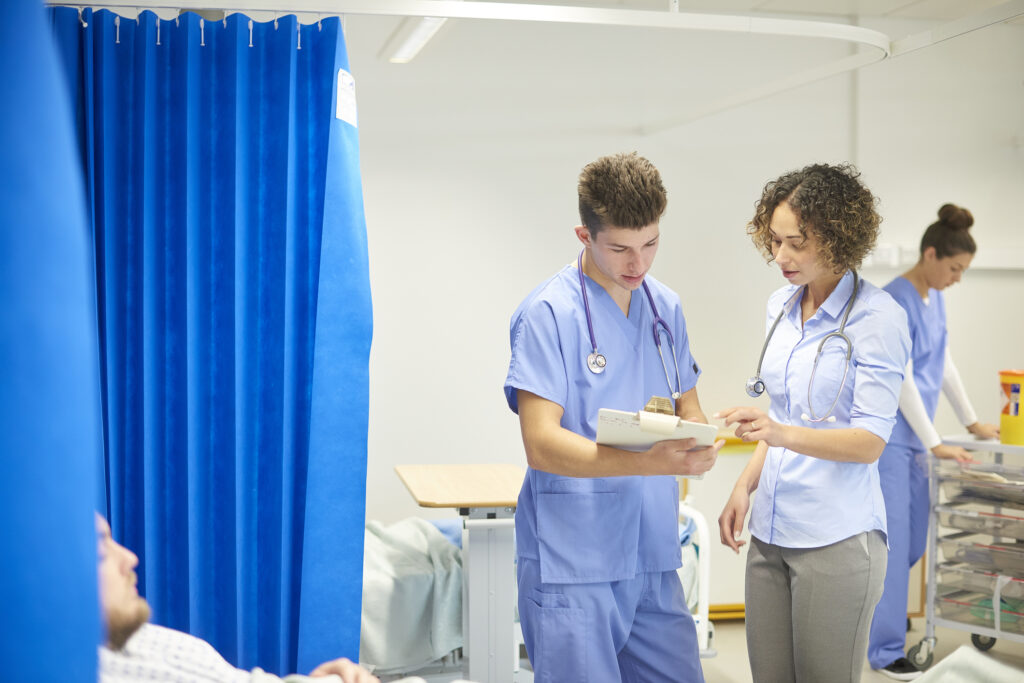Essential Tips for Clinical Placement

Student clinical placements are an incredible steppingstone in your healthcare journey, offering real-world experience and solidifying your theoretical knowledge as a medical student. While navigating this exciting path, you might encounter a common anxiety hurdle: a drug screen. This requirement, while crucial for patient safety and upholding professional standards, can raise questions and even concerns. We want to ensure your clinical placement journey is smooth and successful, so we have created this guide to explain the drug screening process and equip you with essential tips.
Understanding the “Why” Behind Drug Screen:
Drug screening in healthcare environments isn’t arbitrary. It plays a vital role in protecting the well-being of our patients, who entrust us with their care. Patients entrust healthcare professionals with their well-being, and it’s paramount that these professionals are fit to perform their duties without being under the influence of impairing substances. Drug screening helps us mitigate potential risks associated with substance abuse, promoting a safe and secure environment for both patients and healthcare workers.
Common Types of Drug Screenings:
- Urine Test: This is the most affordable and widely available screening type, with a short detection window (2-5 days) for most substances. It is less accurate than other methods for detecting long-term or infrequent use. The screening method is also susceptible to tampering and result manipulation.
- Hair Follicle Test: This has the longest detection window (up to 90 days), making it ideal for detecting past drug use. The method is more difficult to tamper with and is the most expensive and invasive, as it requires hair removal from the subject.This type of drug screening also may not detect recent drug use due to the elongated cycle.
- Oral Fluid Test: This is a non-invasive and rapid result test that often produces results within minutes and can detect recent drug use (typically within 24-48 hours of ingestion). It has a shorter detection window than hair tests and is prone to false positives due to environmental factors or certain medications.
- Blood Test:A blood test is highly accurate and detects current and recent drug intoxication. It is the most expensive and invasive and is rarely used for pre-employment or clinical placement screening. This is largely due to cost and discomfort.
The Drug Screening Journey and Its Twists:
The specifics of drug screening can vary depending on your placement requirements. Common test types include urine, hair, and oral fluid, each detecting different substances and covering varying timeframes. Generally, the screening process will look like this:
- Charting the Course:You will receive details about the screening process, including the test type, location, and costs. Review this information thoroughly and do not hesitate to ask any questions.
- Sample Time: The specific collection procedure depends on the chosen test type, but following instructions meticulously is crucial to ensure sample integrity.
- Gathering Results:Results are typically communicated within a designated time frame. Negative results typically make your job a lot easier and enable you to carry on with your placement. However, positive results might trigger further inquiries or appeals processes depending on the circumstances.
Preparing for a Smooth Sailing:
Being proactive can significantly ease the process and minimize potential anxieties. Here are some key tips to remember when you are about to start the process.
- Know the rules of drug screening and thoroughly understand our institution’s specific drug screening policies and procedures. You can find this information on our website or through academic advisors.
- Chart your medications and be mindful of any prescription or over-the-counter medications and supplements you take regularly. Some substances might trigger positive results, even if legitimately prescribed. Consult your healthcare provider or the testing facility if you have concerns.
- Open Communication is Key: Honesty and transparency are crucial throughout the process. If you have questions or concerns, reach out to the appropriate authorities. We are here to help!
Addressing Potential Bumps in the Road:
It is understandable to feel anxious, especially if you take medications that might raise red flags. Remember, we have established procedures to address such situations. If you receive a positive test result due to a legitimate prescription, you can initiate an appeal process by providing relevant documentation from your healthcare provider. We have clear protocols for handling these situations fairly and transparently.
Remember, You’re Not Alone
Drug screening is a common requirement for student clinical placements, and you have numerous resources available to support you. Your academic advisor, student support services, or the testing facility itself can provide guidance and address any specific concerns you might have. Additionally, do not hesitate to connect with fellow students who have already been through this process. Their insights and experiences can be invaluable.
Clinical placements are a significant milestone in your healthcare education journey. While drug screen might seem like an initial hurdle, understanding its purpose, familiarizing yourself with the process, and preparing proactively can significantly ease the experience. Remember, open communication, honesty, and utilizing available resources are key to navigating this step smoothly and confidently. Placement is all about gaining valuable clinical experience and contributing meaningfully to the healthcare field.
Remember, you’re not alone on this journey. By following these tips and leveraging the wealth of resources available, you can navigate your clinical placements with confidence and focus on the incredible experience they offer. Drug screening plays a crucial role in upholding these values, and we want to ensure you understand the importance of this step and how to ensure you get through it smoothly.
